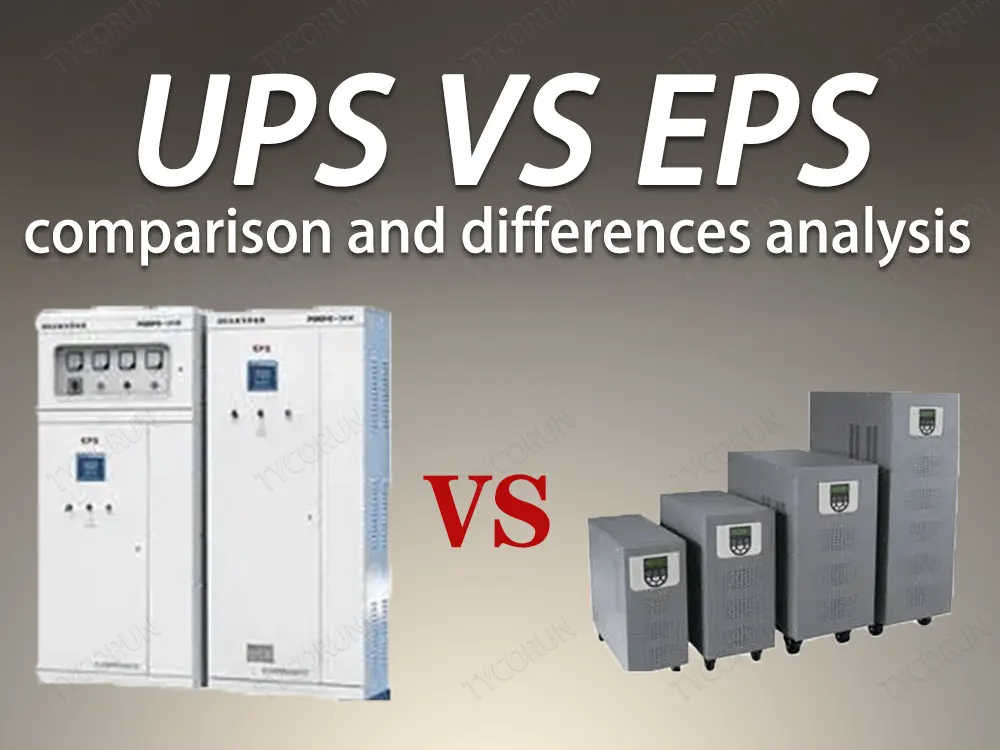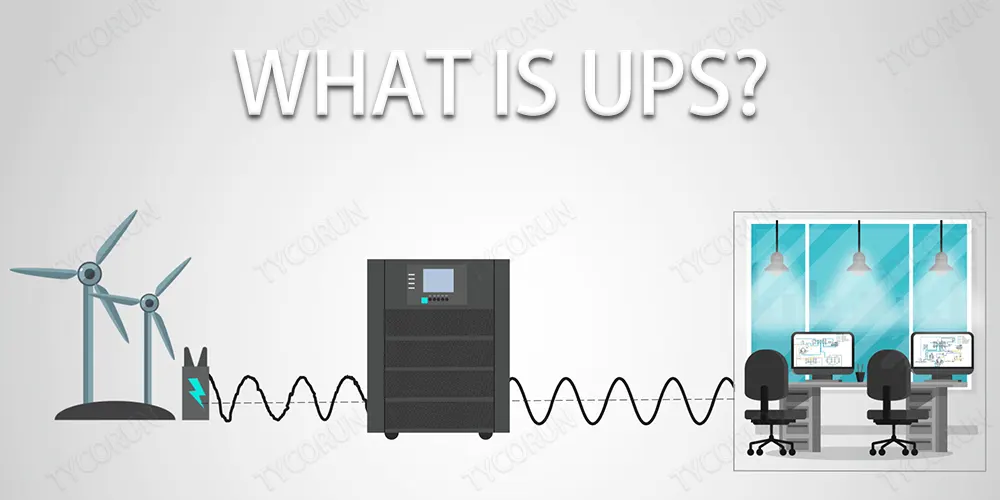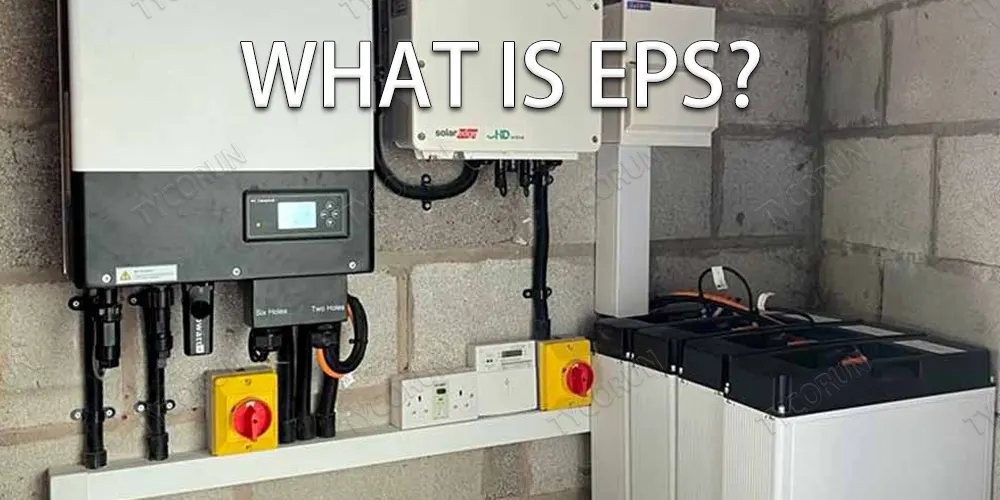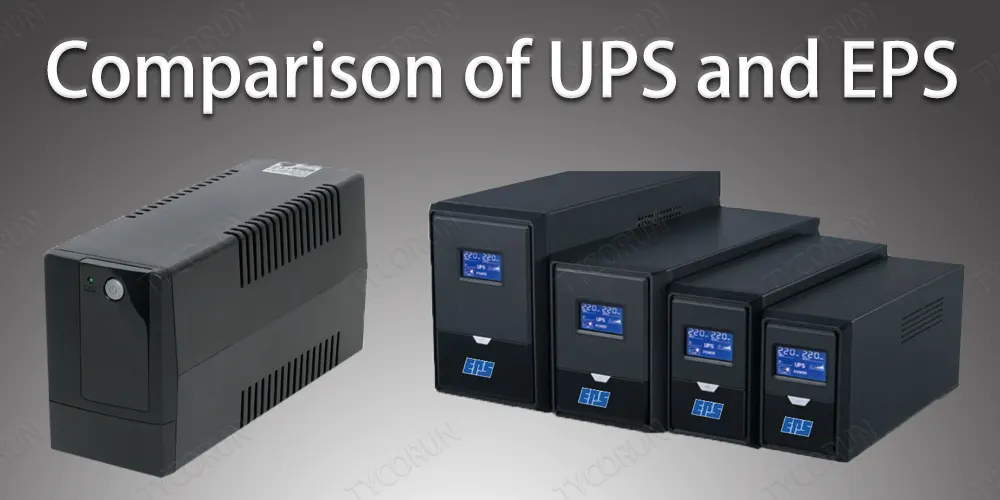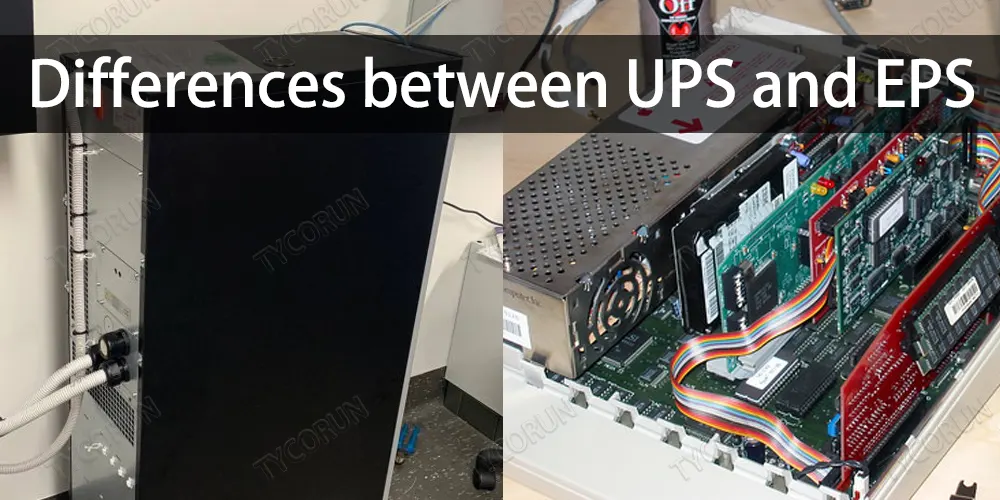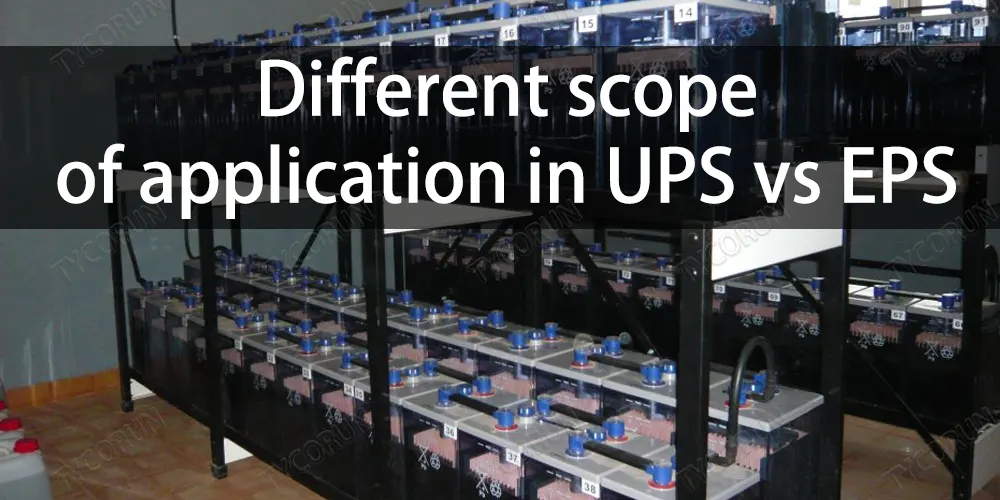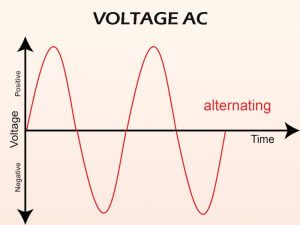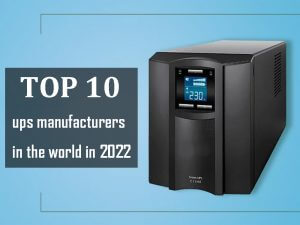UPS vs EPS comparison and differences analysis

What is UPS?
It is mainly used to provide power protection for important loads, including eliminating various power disturbances in the power grid, such as power outages, voltage fluctuations, frequency fluctuations, harmonics, voltage distortion, electrical noise, spikes, etc.
Different from UPS vs EPS, the working principle of UPS is to use the chemical energy of the battery as backup energy.
When the AC power fails, the UPS can continuously provide power for the equipment. It is generally composed of a rectifier, an inverter, a static switch, and a UPS lithium battery.
What is EPS?
Comparing UPS vs EPS, EPS is a centralized fire emergency power supply, backup type, switching time is longer than UPS, not suitable for precision power supply occasions such as computers.
The main goal is to solve the first-level load power supply equipment such as emergency lighting, accident lighting, and fire-fighting facilities, and provide an emergency power supply system with independent circuits that meets fire-fighting regulations.
The system can provide emergency power supply in an emergency state, which is used to solve lighting power consumption or only one mains power supply lacks the second power supply, or replace the generator set to form the second power supply, or be used in occasions that require a third power supply.
The EPS mainly includes rectifier battery charger, battery pack, inverter, mutual input device and system controller and other parts.
Among them, the inverter is the core, and DSP or single-chip CPU is usually used to perform SPWM modulation control on the inverter part, so that it can obtain a good AC waveform output.
The function of the rectifier charger is to realize timely charging of the battery pack when the mains input is normal.
Comparison of UPS vs EPS
| Indicators | EPS | UPS |
| Conversion time | ≤0.1-0.2s | About 10ms |
| Power saving | It is in a sleep state when the grid power supply is normal, and the power consumption is less than 0.1%. When there is no grid power supply, its efficiency is 85%-92%. | It also works when the grid power supply is normal, and its efficiency is 80%-90%. |
| Noise | It is in a sleep state when the grid power supply is normal, and when it is still without noise and without grid power supply, its noise is <55dB. | The working noise is generally 55-65dB. |
| Price | It is about 60% of the price of a UPS power host with the same capacity. | The price is high. |
| Life | The inverter works only when there is no electricity in the grid, and the service life of the main engine is relatively long, generally more than 20 years. | As long as it is turned on, it will work continuously and uninterrupted, so its life is relatively short, generally 8 years. |
| Adaptability to load | It is especially suitable for inductive loads such as motors and various mixed electric loads. | Suitable for capacitive and resistive loads (computer loads). |
| Work purpose | Make sure the emergency power supply is secure. | Ensure uninterrupted and stable power supply. |
| Place of use | Place in building shafts or distribution rooms. | Put it in a computer room or an air-conditioned room. |
Differences between UPS and EPS
Composition is different
Compared UPS vs EPS, UPS is composed of five parts: main circuit, bypass, battery and other power input circuits, rectifier (REC) for AC to DC converter, inverter (INV) for DC/AC conversion, inverter and bypass output switching circuit and storage batteries.
Different from UPS vs EPS, EPS is mainly composed of input unit, output unit, charging module, battery pack, inverter, monitor, output switching device, etc. The system can provide emergency power supply in an emergency state.
The difference in design indicators between UPS vs EPS
Both devices use IGBT (Insulated Gate Bipolar Transistor) inverter technology and PWM (Pulse Width Modulation) technology, and can provide two selectable output power supplies at the same time. But there is a big difference between the two in the control system of the inverter.
UPS is a single closed-loop control system with voltage feedback, so the sine wave waveform of the output voltage and the dynamic adjustment accuracy of the voltage are better. Comparing UPS vs EPS, the EPS inverter control system is a multi-closed-loop control system composed of voltage and current feedback, and its output power has strong overload capacity, load adaptability and high reliability.
The difference in the output between UPS vs EPS
The power supply objects of UPS are computers and network equipment, and the load properties are not much different, so the national standard stipulates that the output power factor of UPS is 0.8. However, different from UPS vs EPS, EPS is mainly used as a power supply emergency protection, and the load nature is a combination of inductive, capacitive and rectifying loads.
Some loads are put into operation after the mains power failure, so EPS is required to provide a large inrush current. Generally, it is required to operate normally for more than 10 minutes under 120% rated load, so EPS needs to have better output dynamic characteristics and stronger overload resistance.
The unit of rated capacity of UPS is apparent power (kV·A), and the unit of rated capacity of EPS is active power (kW). In order to ensure the uninterrupted and high-quality power supply of the online UPS, the inverter is given priority; while UPS vs EPS, the EPS power supply is used to ensure emergency use, the mains power is given priority.
Different scope of application in UPS vs EPS
EPS is mainly used for fire-fighting loads and some electrical equipment that does not require high power supply quality but needs to ensure continuous power supply. It only emphasizes the function of continuous power supply. When EPS is used for fire-fighting loads, its product technology is certified by the Ministry of Public Security for fire-fighting.
UPS is generally used in computer and digital information systems and other occasions, requiring high-quality power supply loads, mainly emphasizing inverter switching time, output voltage, frequency stability, pure output waveform, and no various interferences.
The functional difference between UPS vs EPS
UPS vs EPS have mains bypass and inverter circuits, but EPS only has the function of continuous power supply, and generally does not have high requirements for inverter switching time, and can have multiple outputs, and some EPSs are also equipped with battery cell monitoring functions. EPS is powered by bypass when mains power is normal.
When the mains power is interrupted, it is switched to inverter power supply, and the power utilization rate is high. UPS generally emphasizes its three major functions: voltage stabilization and frequency stabilization; uninterrupted power supply with extremely high switching time requirements; city power purification.
The double-conversion circuit power supply that focuses on rectification/inversion in daily life is switched to bypass power supply when the inverter fails or is overloaded, and the power utilization rate is not high.
Different from UPS vs EPS, the UPS does not only play a role when the mains power is interrupted. When the mains voltage is too low, too high, or the line has surges and other abnormal conditions, the UPS can output high-quality power to ensure the normal operation of electrical equipment.
Conclusion
To sum up, when choosing UPS vs EPS, it is necessary to distinguish the nature, occasion and purpose of use, and choose reasonably. Do not think one-sidedly that EPS is better than UPS or UPS is better than EPS. They each have their own uses and design concepts. This paper briefly discusses the principles, performance characteristics and applicable fields of UPS vs EPS, hoping to help everyone better understand and apply UPS vs EPS.

